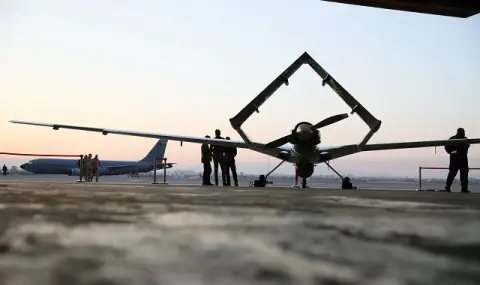The constant technological and tactical innovations of Ukrainian, but also Russian, forces continue to change the nature of military operations in Ukraine.
The gray zone along the front line now extends about ten kilometers deep.
This is stated in the daily analysis of the Institute for the Study of War (ISW).
On April 27, a sergeant in a Ukrainian drone battalion, likely operating in the Chasiv Yar direction, reported that continuous technological innovations and battlefield adaptations are increasingly changing the nature of modern conventional warfare in Ukraine to a war characterized primarily by "long-range, remote combat" instead of encounters between infantry and armored vehicles.
The sergeant noted that the increased use of drones by Ukrainian and Russian forces has expanded the area of contested gray areas and defeat zones at the front end of the battle area.
The sergeant noted that in 2024 The contested gray zones were approximately 500 meters to two kilometers deep, but the increased use of drones has since expanded the gray zone to five to seven kilometers in some areas of the front line.
The sergeant reported that Russian forces are improving and expanding their drone capabilities and are mimicking Ukrainian forces' tactics of using drones to intercept enemy drones and conduct remote mining.
Ukrainian forces are successfully using the superior capabilities of drones to protect critical sectors of the front line, while mitigating personnel and materiel constraints.
Ukraine maintains over 100 brigades tasked with defending a front line both within Ukraine and along Ukraine's international border with Russia, currently over 2,100 kilometers long, and is making significant use of drone capabilities, along with traditional capabilities, to deny Russian attacks along the entire front line.
Ukraine has demonstrated the ability to rapidly increase domestic drone production and purchase foreign drones, which is conducive to frontline defense, as well as to conduct a sustained long-range strike campaign targeting critical Russian energy and defense industrial facilities deep inside Russian territory, disrupting and degrading Russian military production and logistics.
Both Ukrainian and Russian forces are increasingly using fiber-optic drones to strike at each other’s frontline positions.
ISW has observed the rapid pace at which both Ukraine and Russia are developing, deploying, and implementing near-continuous technological innovations and battlefield-adapted tactics to optimize the dynamics of combat operations.
Ukrainian and Russian forces are deploying new adaptations within months, not years, and are constantly experimenting, further fueling the feedback loop of increased reliance on technology and tactical innovation to maintain battlefield advantages. Innovations and operational concepts being created in Ukraine will set the stage for future military operations.
Russian forces are trying to neutralize Ukrainian technological adaptations and drone operations by incorporating motorcycles and civilian vehicles into offensive operations along the entire front line.
A sergeant in the Ukrainian Unmanned Systems Battalion said that Russian forces are increasingly using infantry assaults and motorized assaults with motorcycles, all-terrain vehicles (ATVs), and cars to advance into areas where Ukrainian forces are using drones to maintain front-line positions.
Thus, Russian forces are using motorcycles and other cars to disperse their forces and more easily evade drone strikes.
On April 27, a Ukrainian soldier operating in the Pokrovsk direction said that since March 20, Russian forces have carried out 13 motorized motorcycle attacks.
A Ukrainian serviceman operating in the Pokrovsk region stated on April 27 that Russian forces in the Pokrovsk region are unable to move heavy armored vehicles to frontline positions due to the disruption of Russian ground lines of communication (GLOC), leading to a change in tactics by Russian forces, which prioritize daily infantry attacks supported by motorcycles.
